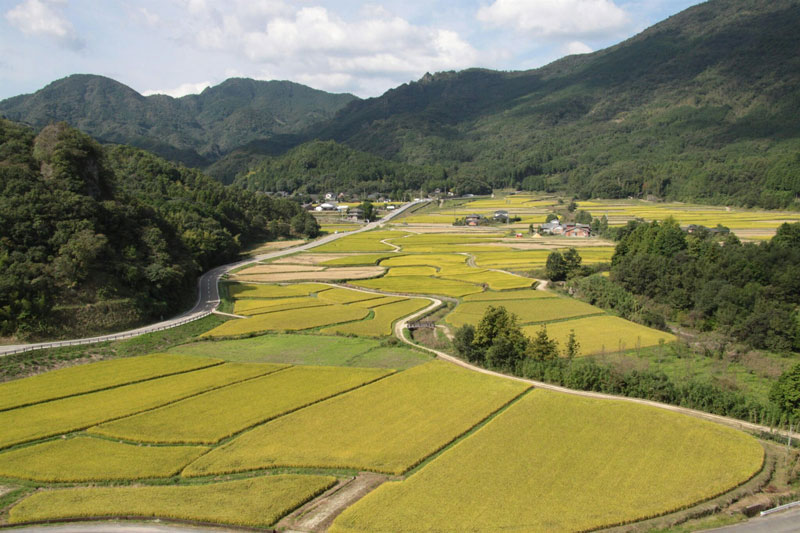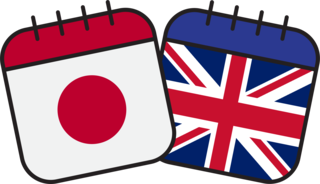
A Woven Heritage: Agriculture in Oita
- 25 July 2024
- 18:30 - 19:30
- The Hall, Japan House London, 101-111 Kensington High Street, London, W8 5SA
- https://www.japanhouselondon.uk/whats-on/a-woven-heritage-agriculture-in-oita/
- +44 (0)20 7932 7100
- info@japanhouselondon.uk
- Tweet
Discover the centuries-old farming traditions and diverse ecosystem of the Kunisaki Peninsula-Usa region in Oita Prefecture, recognized as a Globally Important Agricultural Heritage System (GIAHS) in 2013 by the United Nations.
Hayashi Hiroaki, Chairman of the Kunisaki Peninsula-Usa GIAHS Promotion Association, reveals the distinctive features of this remarkable landscape and explains how a symbiotic system of kunugi(sawtooth oak) forests and over 1,200 interlinked irrigation ponds sustain agriculture in this water-scarce region. The ponds, developed since the 11th century, secure essential water resources, while the forests help retain soil moisture and provide log beds for the region’s famous shiitake mushrooms.
In addition to shiitake mushrooms, the integrated agricultural system supports a number of high-quality crops, including paddy field rice and Kunisaki shichitōi, a type of grass used to craft tatami mats, which today is produced only in the Kunisaki Peninsula.
Following the talk, local artist and craftswoman Iwakiri Chika demonstrates another use forshichitōi, showing how the material can be woven to craft an enza (lit. ‘round seat’) floor cushion.
Complementing this event, Iwakiri Chika and Hayashi Hiroaki are also leading a series of hands-on workshops giving guests a first-hand opportunity to learn how to weave usingshichitōi. Information on how to book for a workshop can be found here.
This event is held as part of the Spotlight on Local Japan Programme which accepts applications from potential collaborators based in Japan to co-create cultural events presenting Japan’s regional diversity at Japan House London.
About the speaker
Hayashi Hiroaki
Chairman of the Kunisaki Peninsula-Usa GIAHS Promotion Association
Hayashi Hiroaki was born in Kunisaki, Oita Prefecture, into a family of rice and shiitake farmers. He graduated from the Faculty of Agriculture at the University of Tokyo and served as an assistant professor in the Graduate School of Agricultural and Life Sciences from 1995 to 2003. In 2004, he returned to Kunisaki and began to cultivate shiitake mushrooms, rice, and shichitōi. Since the Kunisaki Peninsula-Usa region’s designation as a GIAHS site in 2013, he has led conservation and promotion activities as the chairman of the Kunisaki Peninsula-Usa GIAHS Promotion Association. Since 2010, he has also served as the president of the Kunisaki Shichitōi Promotion Association, during which time Kunisaki shichitōi achieved protected geographical indication (GI) status.
Iwakiri Chika
Shichitōi craftsperson and artist
Iwakiri Chika is an artist and craftsperson specializing in weaving with Kunisaki shichitōi. In 2014, she founded the Shichitōi Studio Nanatsumugi in Kunisaki city, where she creates and sells various items and accessories for daily life usingthe material. Recently, she has also begun cultivating shichitōi herself. Iwakiri actively promotes her craft through workshops across Japan, including on the luxury JR Kyushu sleeper train, Nanatsuboshi in Kyushu. Her shichitōi light fixtures, inspired by firefly baskets, adorn the rooms of Kai Yufuin, a ryokan inn by Hoshino Resorts designed by architect Kuma Kengo.
Please note that filming and photography may take place at this event. Photos and footage of the event may then be used to promote Japan House London, helping more people to discover what we offer. If you have any concerns, please email info@japanhouselondon.uk or contact a member of the team on site.
Booking Essential | Admission Free
